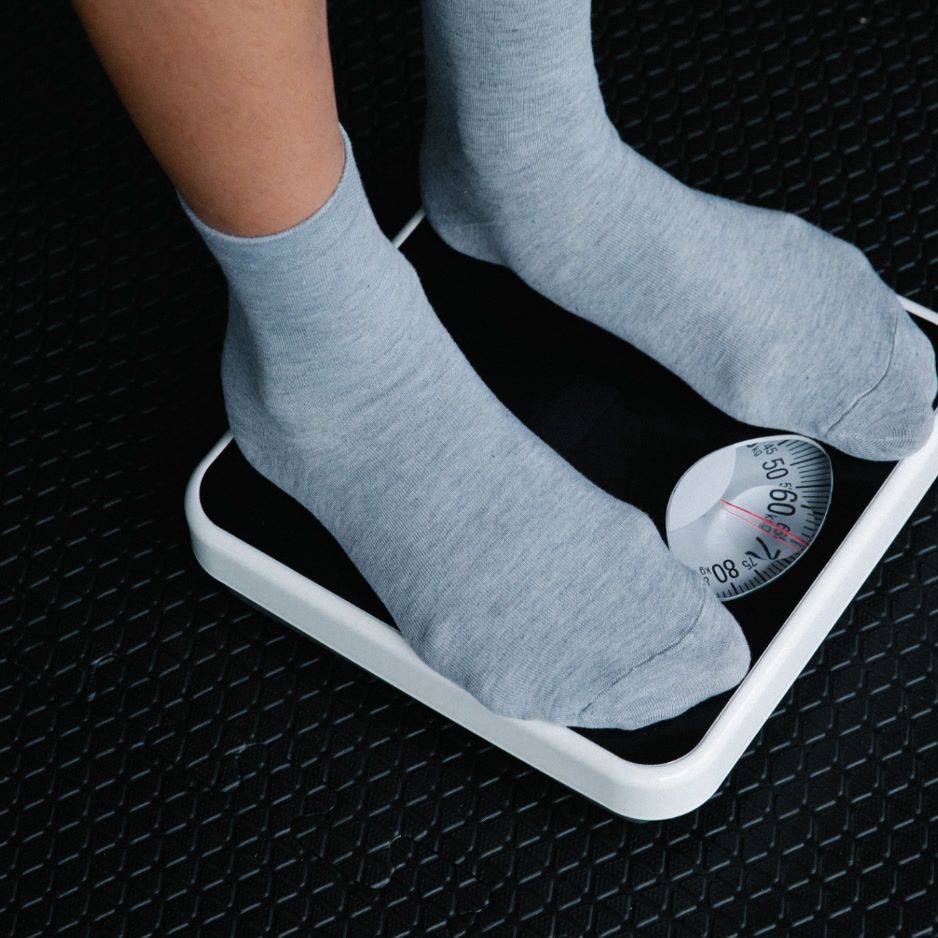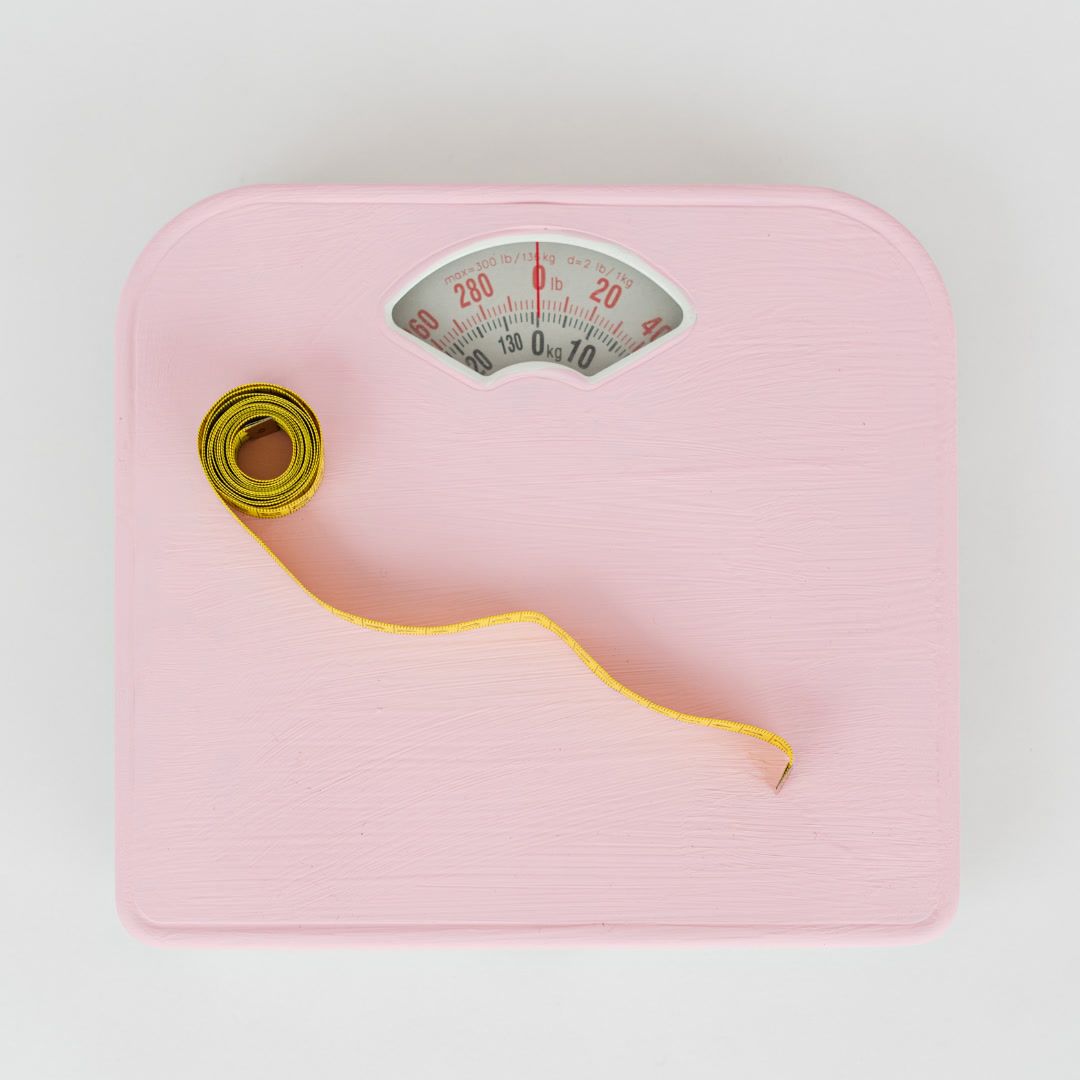How to Take Body Measurements for Weight Loss
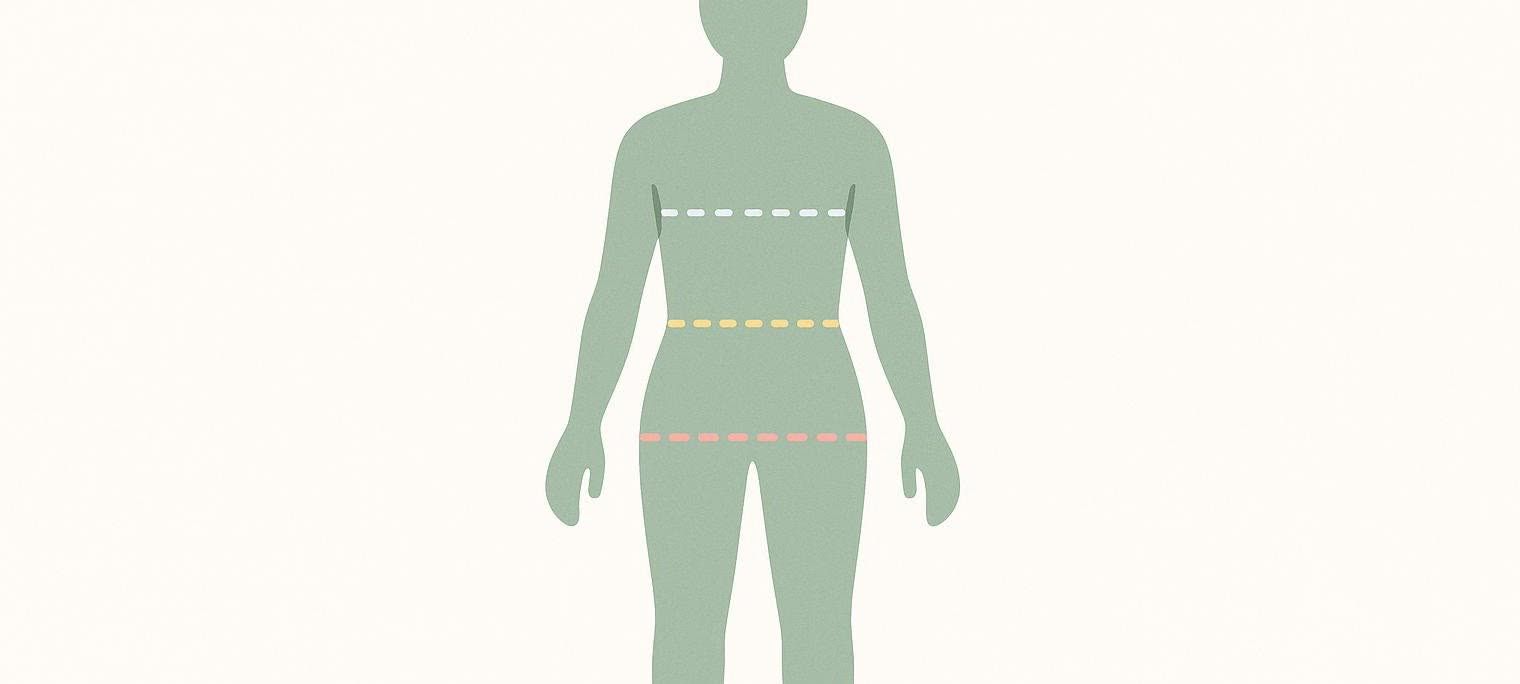
How to Take Body Measurements for Weight Loss
Daily weigh-ins can be misleading. Scale numbers swing up or down with water retention, food volume, and muscle changes—often hiding real fat loss. A simple way to get clearer feedback is to track circumference measurements—the inches around key body sites—alongside (or even instead of) your scale weight.
This guide walks you through exactly how to take body measurements for weight loss at home, interpret the numbers, and stay motivated with visible progress. All you need is a flexible tape measure and about five minutes.
Why Inches Matter More Than Pounds
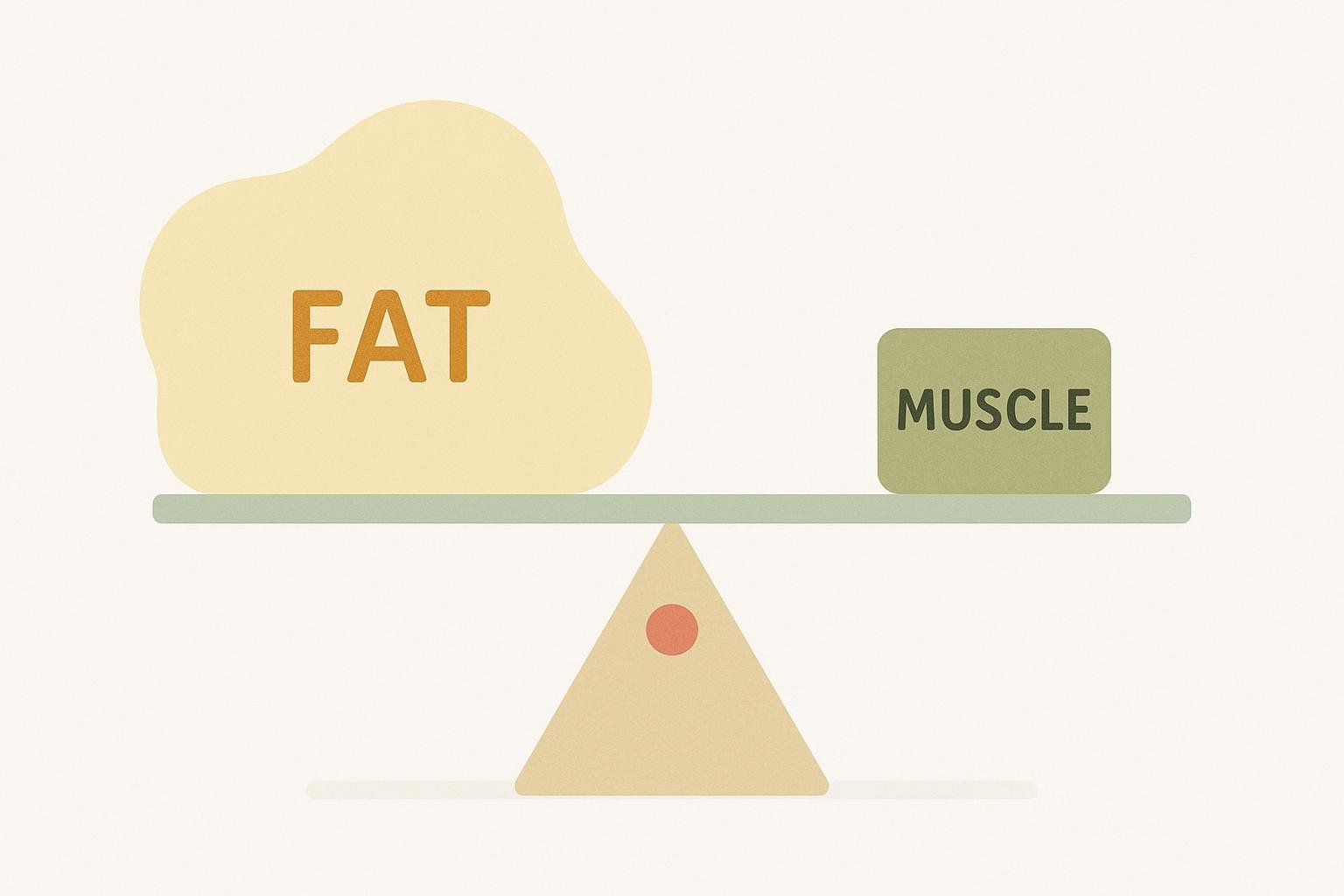
- Fat and muscle have different densities—one pound of fat takes up far more space than a pound of muscle, as our guide to muscle vs. fat explains.
- Temporary water swings can mask real fat loss for days—or weeks; our article on water weight fluctuations shows why.
- Central body measurements (especially waist) are stronger predictors of heart-disease and diabetes risk than BMI alone; a waist larger than 35 inches for women or 40 inches for men signals higher risk, according to the National Heart, Lung, and Blood Institute (NHLBI).
Tracking inches helps you:
- Verify fat loss even when the scale stalls.
- Spot muscle gain (for example, smaller waist but larger quads).
- Keep motivation high with tangible, on-body proof of change.
Coach’s Tip: For the most precise body-fat breakdown, schedule a periodic DEXA scan with BodySpec. See details in our complete guide to what a DEXA scan covers.
Gear Checklist
| Item | Why It Matters |
|---|---|
| Soft, non-stretch fabric tape measure | Allows snug—but not squeezing—placement |
| Mirror or helper | Ensures the tape stays level and parallel to the floor |
| Notebook, spreadsheet, or tracker app | Logs numbers so you can chart trends |
| Form-fitting clothing or bare skin | Prevents bulky fabric from inflating readings |
Golden Rules for Consistent Measurements
- Measure first thing in the morning after using the restroom and before eating or drinking.
- Stand tall but relaxed. No sucking in or flexing.
- Place the tape flat against the skin—level and parallel to the floor.
- Pull just snug enough for contact. If the tape leaves an indentation, it’s too tight.
- Record the average of two readings. If they differ by more than 0.25 inch, take a third and average all three.
- Re-measure every 2–4 weeks for fat-loss phases; monthly is plenty for maintenance.
Where to Measure and How (Step-by-Step)
1. Waist (Health Priority Zone)
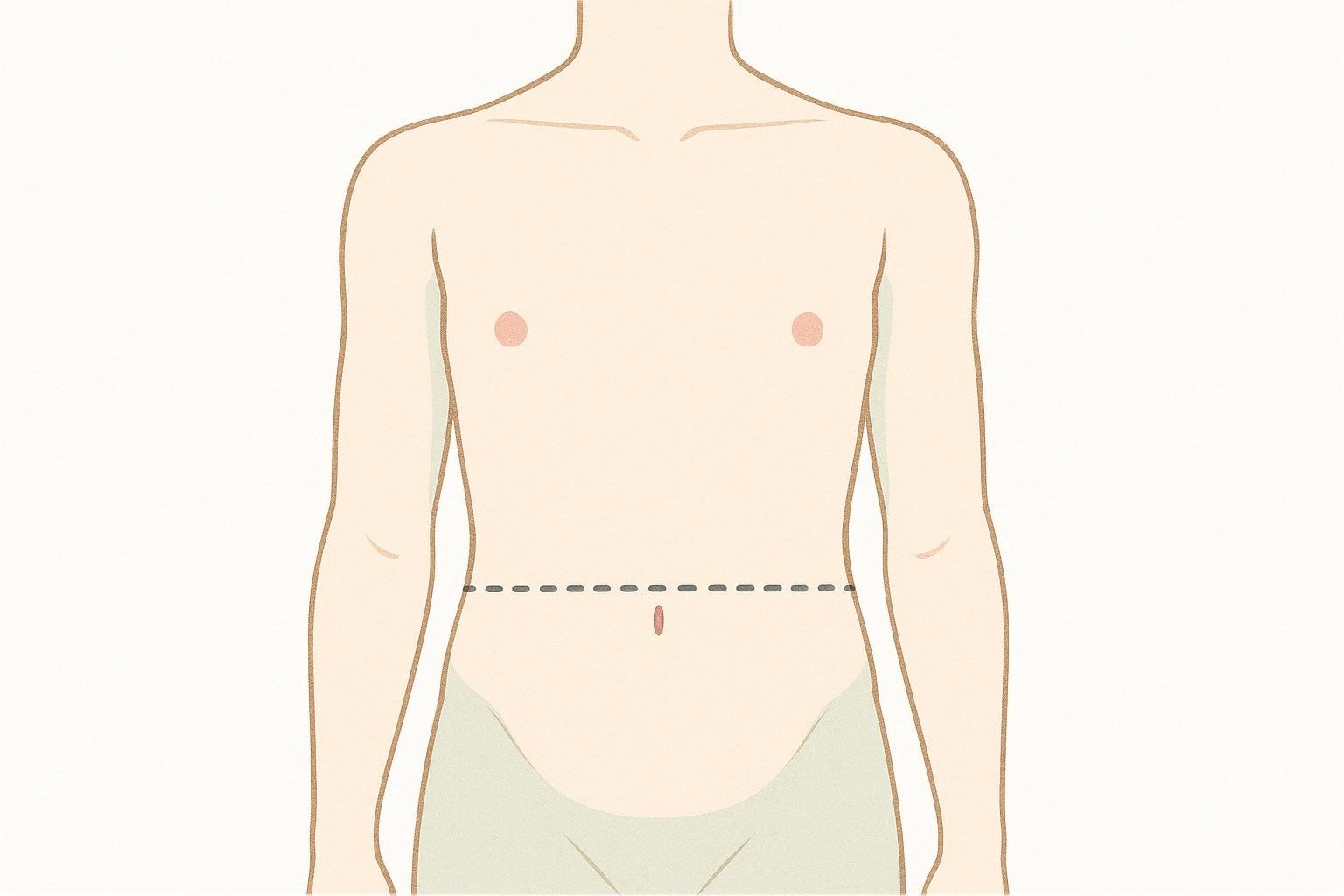
- Find the midpoint between your lowest rib and the top of your hip bone (iliac crest).
- Relax, exhale normally, and wrap the tape around this point.
- Check in the mirror that the tape is level front to back.
- Note the measurement to the nearest 0.1 inch.
2. Hips/Glutes
- Stand with feet together.
- Place the tape around the widest part of your buttocks.
- Keep it level and parallel; avoid tilting upward in front.
- Record.
3. Chest/Bust
- Lift arms to thread the tape around the torso at nipple line (men) or fullest part of bust (women).
- Lower arms.
- Ensure the tape is level and parallel to the floor all the way around.
- Inhale gently, then exhale and relax before reading.
4. Thigh (Right & Left)
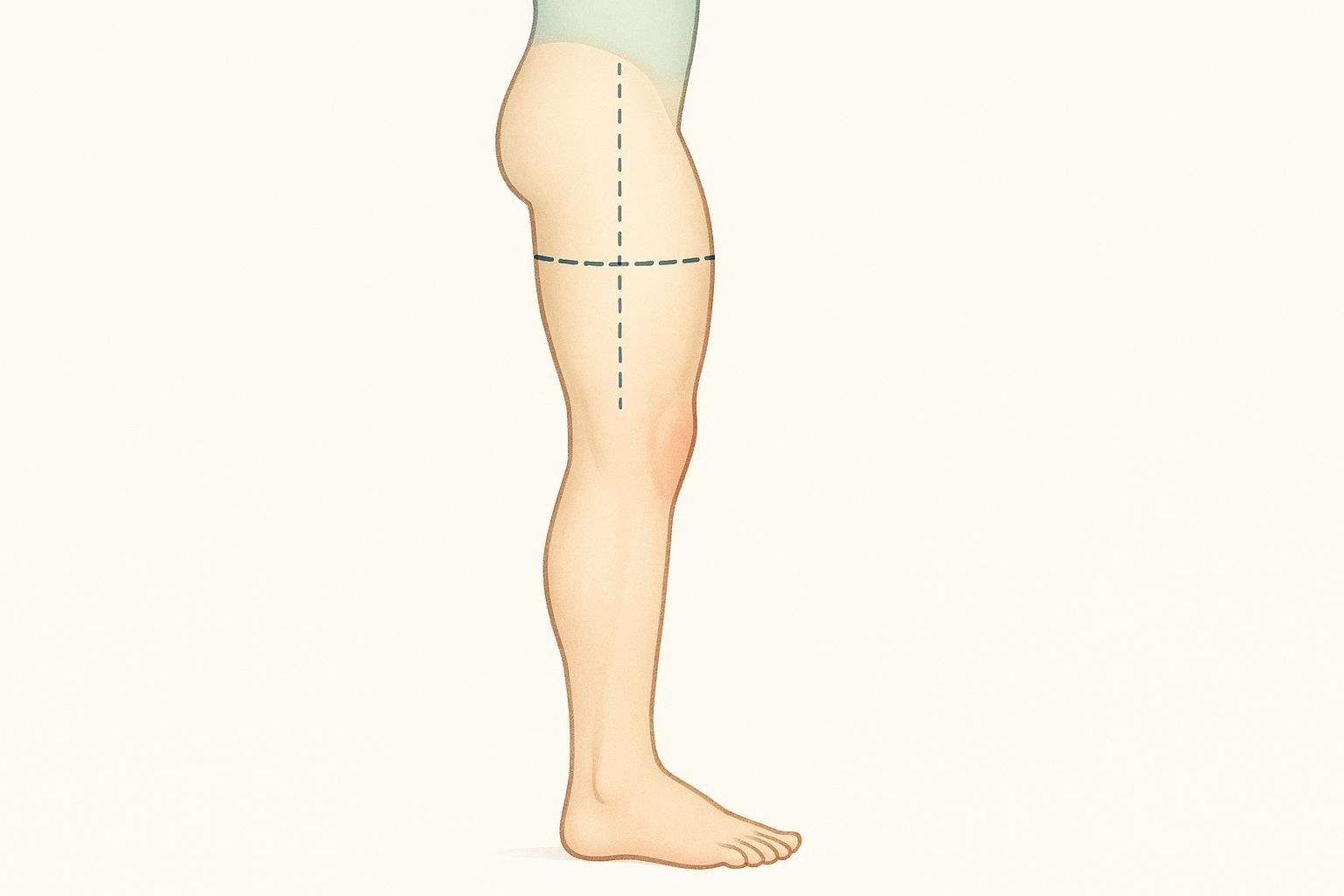
- Shift weight onto the opposite leg.
- Identify the midpoint between the top of your hip bone and the upper edge of your kneecap.
- Wrap the tape around this midpoint, keeping it parallel to the floor.
- Record each leg separately.
5. Upper Arm (Right & Left)
- Let the arm hang naturally.
- Measure the midpoint between the bony tip of your shoulder (acromion) and the point of your elbow (olecranon).
- Keep muscles relaxed—no flexing.
6. Calf (Optional)
- Stand with weight evenly distributed on both feet.
- Place tape around the widest part of the calf while standing.
- Ensure the tape isn’t sliding down the muscle belly.
How Often Should You Measure?
| Goal Stage | Frequency |
|---|---|
| Aggressive fat-loss phase | Every 2 weeks |
| Slow recomp or maintenance | Every 4 weeks |
| Postpartum or injury recovery | Monthly |
Consistency beats frequency: choose a schedule you can stick to long-term.
Tracking & Interpreting Your Numbers
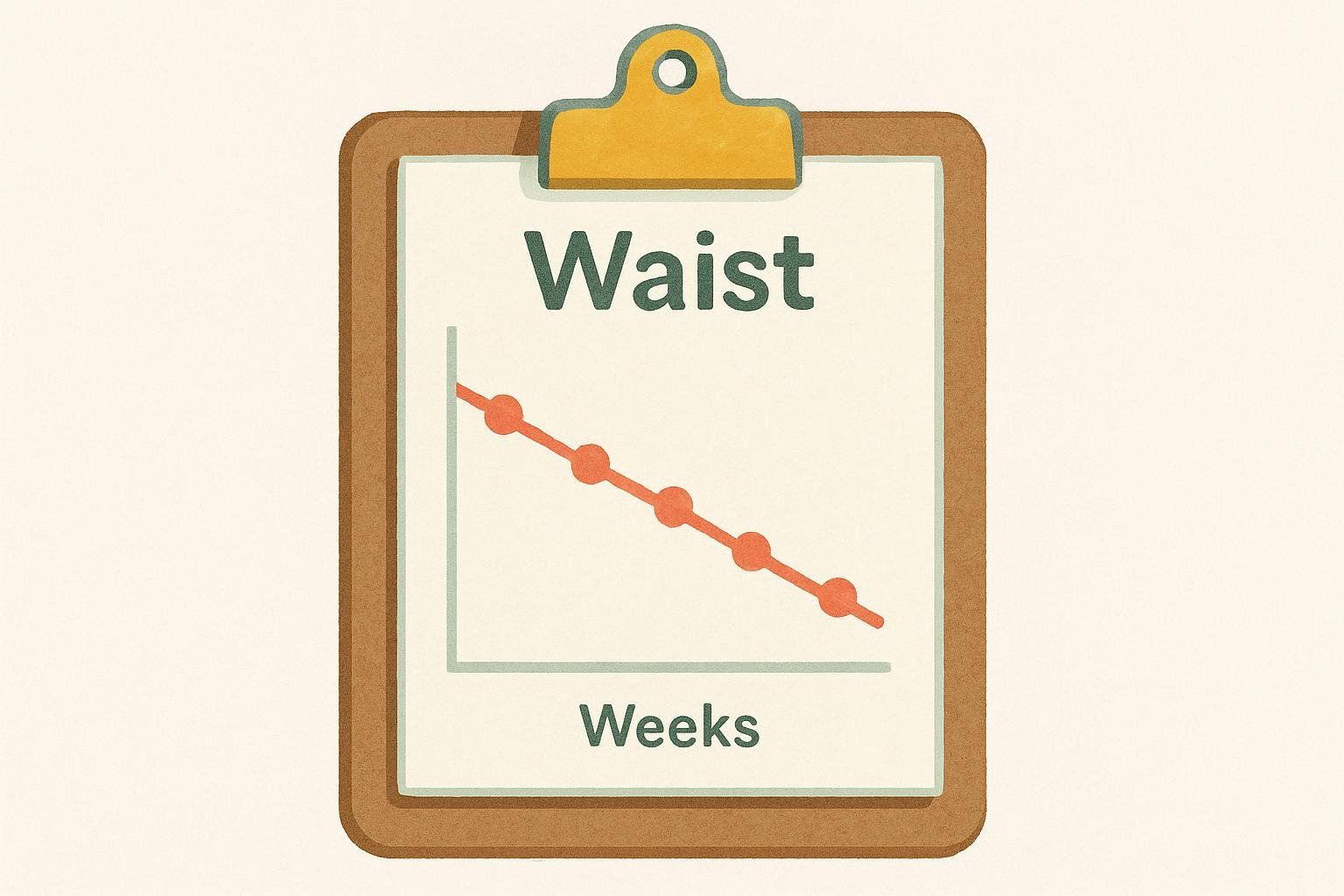
- Log immediately in a notebook, spreadsheet, or tracker app.
- Estimate body-fat levels with our free Body Fat Percentage Calculator whenever you want to convert your latest measurements into a single snapshot number.
- Watch for trends, not single data points. A half-inch drop at the waist over a month is meaningful progress even if weight is flat.
- Pair measurements with photos (front, side, back) taken under the same lighting to see visual change.
- Compare against benchmarks. Use our Body Fat Percentage Chart to see how your measurements correspond to general body-fat percentage ranges.
Example Progress Log (Waist & Hips)
| Date | Waist (in) | Hips (in) | Change vs. Start |
|---|---|---|---|
| Week 0 | 38.0 | 44.0 | — |
| Week 4 | 36.8 | 43.2 | −1.2 waist / −0.8 hips |
| Week 8 | 35.5 | 42.5 | −2.5 waist / −1.5 hips |
What If the Tape Isn’t Moving?
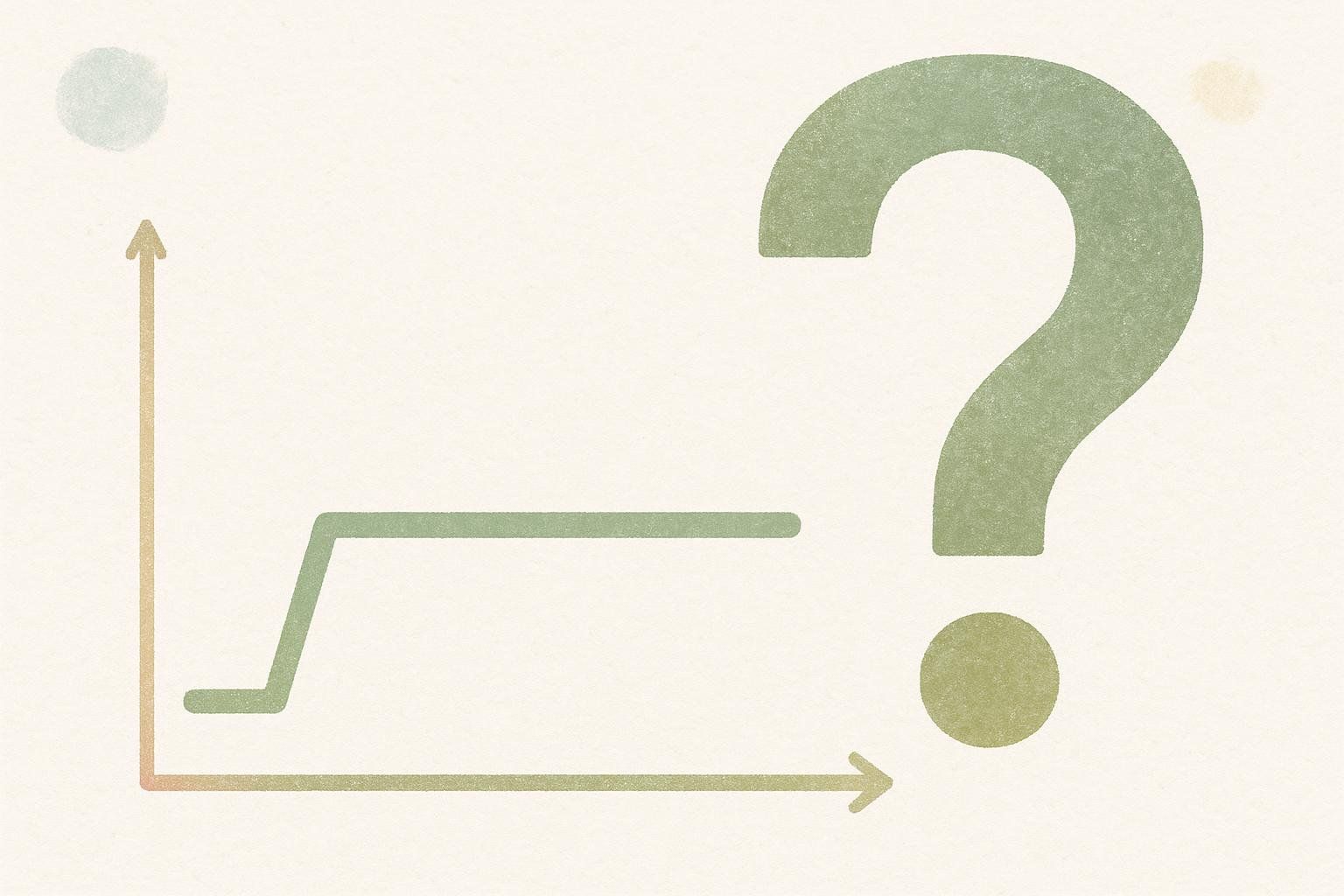
- Scale fluctuations: Water retention can mask inch loss, as explained in our guide to understanding water weight fluctuations.
- Muscle gain: Strength training can add lean mass even while losing fat. Read more about losing fat without losing muscle.
- Measurement error: Re-check tape placement and tension.
- Plateau: Adjust nutrition or activity, or schedule a DEXA to pinpoint stubborn fat areas.
Level Up: Combine Tape With DEXA Scans
Circumference tracking shines between professional assessments, but a DEXA scan gives the full picture: total fat mass, lean mass, bone density, and even visceral fat around your organs. Pairing a quarterly scan with monthly tape measures creates the ultimate feedback loop. Learn what to expect in our DEXA overview.
Takeaway: Measure to Manage
Tape measurements turn vague goals like body recomposition into concrete numbers you can manage. Grab a tape, follow the steps above, and watch the inches fall.
When you’re ready for laboratory-grade confirmation, book a BodySpec scan and see exactly where those inches went.
